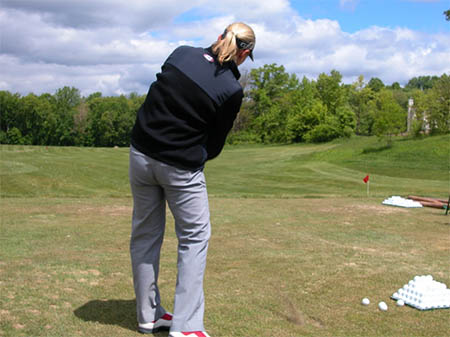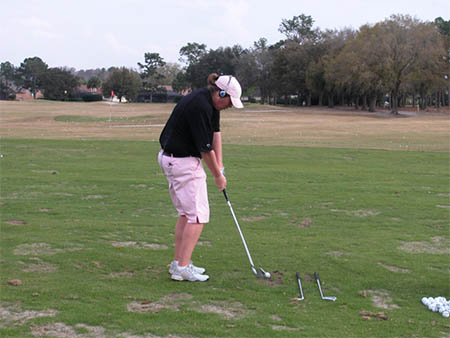Headomics: Head Movement in Golf Swing

A Legacy Post by Keiser University College of Golf Senior Faculty and Director of Research Dr. T. J. Tomasi (1940-2023)
Your neck is designed to allow you to nod your head “yes” and rotate your head “no.” During the golf swing, you want the “no” motion as opposed to the “yes” motion.
To keep your head in the middle of your shoulders where it should be during the backswing, rotate your neck away from the target along with your shoulders, and then back toward the ball during the downswing. The key principle to keep in mind here is, “rotate the neck and your head goes with it.” By trying to keep your head and neck rock-still as you swing the golf club, you develop the “turkey peeking over a log” syndrome. At the top of your swing, your head is off center, causing you to peek over your front shoulder to see the ball. And because the average adult head weighs ~ ten pounds, ‘peeking’ causes big-time balance problems as well as vision glitches.
FOVEAL FIX
The fovea is located in the central region of the retina on the back of your eye. It contains the highest concentration of seeing cells, which is why foveal vision gives you a clear look at a stationary ball. The problem is that when your head rotates far enough during the backswing, you can no longer maintain foveal vision on the ball, so you must allow the switch to peripheral vision without getting jumpy as the ball appears to move when you switch from “F” to “P.” This is one of those uncomfortable golf moves that can take a while to incorporate because switching to peripheral vision means giving up your clear and quiet picture of the world, and that’s difficult. Once you understand that the big switch is so important, you can appreciate why the advice to “keep your head still” and “keep your head down” is so disruptive. Basically, unless you are built like Gumby, you can’t coil fully while keeping your head riveted on the ball.

Note how Annika Sorenstam’s head is in the middle of her shoulders, a move that clears room to drive the right shoulder through the ball.

This player has used the “yes” motion with her head and dropped her chin onto her chest, blocking her right shoulder and forcing her hands to flip at impact – a big swing no-no.
Learn more!
Want more tips? If you want to take your game to the next level, contact our team at Keiser University’s College of Golf & Sport Management today. With our dedication and experience, we can elevate your game to new heights together. Give us a call today at 888-355-4465.














